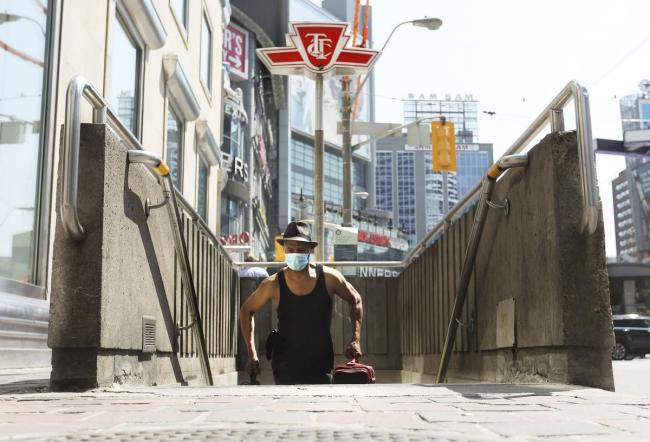Articles Menu

While the U.S. border remains closed, Joe Biden’s election slogan has found its way into Canada. “Build back better” is what Prime Minister Justin Trudeau is now promising as Canada rebuilds from the coronavirus pandemic.
For Toronto, building back better starts with changing the TTC for the better. Toronto needs a safe and reliable public transit system to fuel our economic recovery.
The first step is to build trust so more riders are comfortable returning to public transit. TTC ridership dropped by 85 per cent at the height of the pandemic. Putting themselves and their loved ones at risk, TTC workers were on the frontlines of the pandemic, getting essential workers to long-term-care centres, hospitals, grocery stores and all the other places that were so important in our time of need.
It has not been easy. Amalgamated Transit Union Local 113, which represents 12,000 TTC workers, had to fight hard for months to secure what is now considered standard protections on the TTC: the option for workers to wear face masks, mandatory face coverings for TTC riders, passenger limits to encourage physical distancing and stronger measures to protect TTC workers in divisions that had outbreaks.
Back in April, the TTC cut service, leading to 450 frontline workers getting laid off. These service cuts had a disproportionate effect on TTC bus routes that serve marginalized communities. Day after day, images surfaced online of overcrowded buses, as essential workers continued to rely on the TTC.
TTC ridership began to rebound from its 85 per cent decline as more businesses and places reopened this summer. Ridership is set to increase further as more employees return to workplaces this fall and some students soon return to classrooms.
Despite increased ridership, many Torontonians will remain concerned about overcrowding and feel uneasy about taking the TTC. For the TTC and our economy to rebound, people must trust the TTC is doing everything it can to handle increased ridership while providing as much physical distancing as possible. We need to ensure Torontonians’ work to flatten the curve wasn’t for nothing. That is why the TTC needs to bring back all 450 laid off frontline TTC workers and restore full service.
Restoring full TTC service is possible as the Ontario government just earmarked $404 million for the City of Toronto to cover the TTC’s operational costs and budget shortfalls as part of the first phase of the federal and provincial governments’ emergency funding commitment.
While Torontonians appreciate the emergency funding from the province and federal government, the pandemic highlighted the underlying issue with our public transit system: the TTC relies on fare revenue more than any other city in North America.
To build a better transit system of the future, we must change the way we fund TTC operations. With stable operational funding from senior levels of government, Toronto won’t need to keep returning to Queen’s Park and Parliament Hill with its hand out for cash. Better funding means Toronto can operate and maintain a world-class system that will get people out of cars and onto public transit.
The second phase of emergency transit funding, expected in 2021, comes with strings attached. The agreement from Premier Doug Ford forces the City of Toronto to consider replacing certain TTC bus routes with privatized service, such as Uber or Lyft, as a condition of emergency funding. Selling off public transit to line the pockets of big ride-share corporations headquartered in San Francisco is not the answer.
Premier Ford made two announcements last week to show his government is moving ahead with new rapid transit projects in Toronto. Building more transit is critical for improving the TTC. However, the pandemic has shown that public services need to remain in public hands. When it comes to public transit, we must prioritize people over profits. We must keep transit public, including all TTC bus routes and new rapid transit lines.
If we are going to build back better, as Prime Minister Trudeau says, then we must restore full TTC service so more people trust taking transit as ridership increases, we must transform the way we fund daily transit operations so we are less reliant on the farebox, and we must push back against Premier Ford’s privatization of transit in all its forms. After all, this window of opportunity to change transit for the better won’t be open for long.
Carlos Santos is the President of Amalgamated Transit Union Local 113.